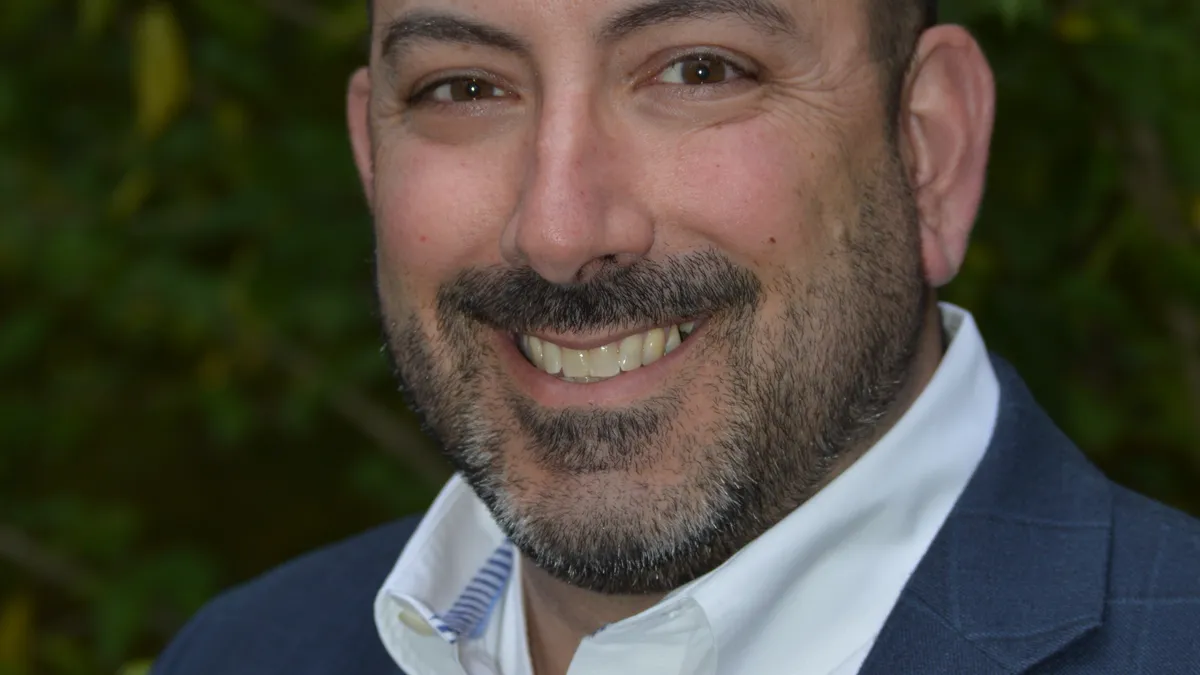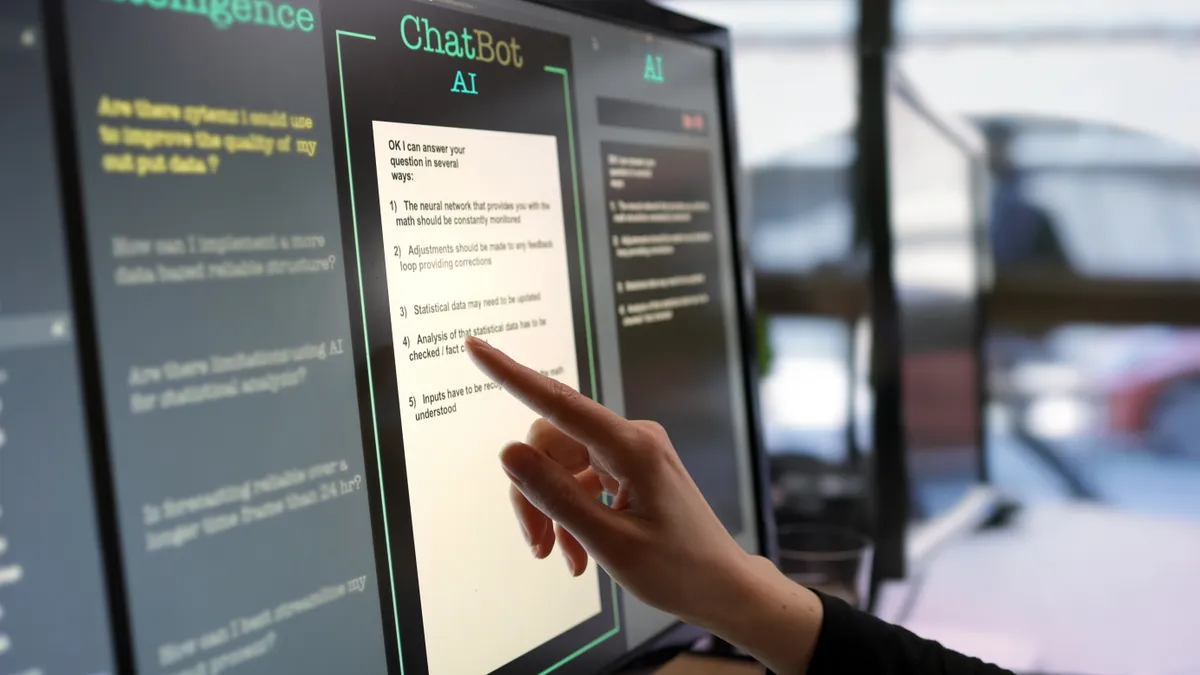From "personalized" to "blended" and beyond, there's no shortage of buzzwords in K-12. And at first glance, seeing a conference session on creating "transformational" schools might seem like more of the same: Nice jargon, but what does it mean?
Matthew X. Joseph knows this, calling attention to it upfront. And as the director of curriculum, instruction and assessment for Massachusetts' Leicester Public Schools, he presents that idea to other educators with a real plan for action.
Education Dive recently caught up with Joseph to learn more about what makes a school transformational, how to get there, and the importance of facilitating peer mentorship along the way.
Editor's Note: The following interview has been edited for brevity and clarity.
EDUCATION DIVE: What is a transformational school? And how do you avoid having that idea become more than just another buzzword, considering all the buzzwords that are out there in education?
MATTHEW X. JOSEPH: I think a transformational school is one willing to shift with the current research and learning tools that are available. And when we look at how schools have operated in the past, creating a transformational school is increasing the student creation of learning.
Typically, students consume information or are passive learners. What a transformational school is doing is making more of a cognitive shift and allowing students to have a voice, to have a say in the creation of lessons, have personalized assessments, and have the ability to ask questions and dig deeper into a topic.
What it creates is intrinsic motivation for students. It creates an environment of learning and inquisition. From there, schools become a hub of learning versus a hub of dissemination of information.
When you start to build a transformational school, it starts with building relationships. If you move too fast, you're walking alone. You as the leader have to make connections with staff, have to listen to understand, and have to model the vision and action you're talking about. It starts with building that foundation of trust and relationships [in order] to have people initially buy in and see where you're going.
What are some of the first steps schools should take on the path to doing that?
JOSEPH: One of the first steps is do a self-assessment of where you are as a school.
How often are teachers standing in front of the classroom? How many devices are in the classroom? What digital learning tools do you have? How often are school leaders [getting] out of their office [and] in the schools' part of the learning? How many events are you going to? What are the books you're reading?
And then, really looking at how leaders are being proactive with setting the vision and tone for making this shift. Without the leaders’ vision and then action, it turns into an "initiative."
You can go to an event like FETC and see all these great things and come back and say, “We're going to try these 10 new things,” but if you didn't do your self-assessment and say, “These are the two or three big ideas and tools that match our needs,” and implement them with fidelity, what will happen is you'll have so many new things and think you're being transformational.
It will just fall flat because you don't have the resources and the professional development to learn everything. Find the two-to-four things that work for your community, for your demographics and for your current staff.
For us, it was about creating more relevant learning, having student voice and having our schools have an open door to transparency. So we use YouTube, Flipgrid, Twitter and other things so our information is out there so people can see. Those were some of our big drivers, but each district might be a little bit different.
The commonality is that self-assessment is where you are setting that vision of where do you want to go, and then closing that gap with the leader's vision and learning, and then putting it into action.
How can school and district leaders make it feel safer for educators working with curriculum and teaching in the classroom to innovate and try new things when you consider all the outside accountability pressures they don't have have direct control over?
JOSEPH: First, the leader has to model risk-taking. [Whether] that is the school building leader or the district leader for that matter, it's shifting how professional development is done and how you're running staff meetings. If you are leading by example — by shifting your leadership, by using cloud-based agendas, by showcasing going in and teaching a class yourself — it creates a culture of trust.
From there, one of the ways teachers can really start to take that risk is for a school to start celebrating the process of learning versus just the end of learning. We often talk about performance, but do we celebrate the thinking along the way? [Performance is] incredibly important for us, too — part of my title is assessment. I need to know our students are making progress, as do all schools. [But] do we celebrate the small accomplishments each day?
When that happens, teachers will take risks because, yes, there's going to be accountability at the end — but if you're celebrating the steps along the way and there are missteps, you're then looking at how do we regroup? How do we evaluate what we're doing and do it differently? What can we do as a school to alleviate a misstep like that and move forward, which in turn allows students to take chances and risks in their learning and their projects and their answers?
What do you think are some of the most common or easiest missteps to make, especially when it comes to curriculum or just in the classroom overall, on the path to becoming transformational?
JOSEPH: There's two I'd point out. I think we look at 1:1 or districts that have an abundance of technology as utilizing digital content. But just doing work on the internet is not being transformational. If it's a one-way street, you go to the internet or you go online to find something, and that's it. That's not fully embracing that shift where it's a two-way street, where we're utilizing online tools like Flipgrid or Padlet or student blogging or students creating websites.
That's a big piece of that, because 1:1 is just a math problem. One device, one student. But the real issue is working with the one that has the computer. How are we supporting students using the digital tool to explore? If we're not exploring using our digital tools, that's one of the big missteps of schools.
If you walk in and see 25 kids with computers open, and they're all doing the same thing or they're all just answering an online worksheet, that’s just digital substitution. To make that shift in the curriculum aspect, we're using the tools. We're using research online. We're allowing students to have their voice out there through video for blogging.
And from there, we're allowing other students to give peer feedback. I just saw a 1st-grade lesson where we're collaborating with a school district in Pennsylvania where our students gave input on a topic — character traits — and that class is going to respond. Or we’re doing a lesson right now with a school in Alabama where we're researching animals in the winter habitat. Our 1st-graders are doing a Flipgrid to give their answers, and the tech integration specialist in Alabama is having his students give research.
So we're going to learn from each other, and that's where that transformational learning comes into play.
With the devices and tools available now, there's a greater opportunity to give students individualized chances to demonstrate their learning. But what are some of the difficulties in making that manageable for educators to do for all learners?
JOSEPH: The challenge is there's so many opportunities. You were at FETC on the vendor floor. There’s probably 200 options — [but] if you bring in 200 things, they're not going to work if your teachers are overwhelmed.
If you do your self-assessment and look at where we are and where we want to go, you can choose the two-to-four tools, applications, subscriptions that fit your learning network, both your physical network and your cultural network, best. Then you bring those few in and say, "All right, here’s a handful of choices," and you train teachers and students how to use them.
There's a mix of control and personalization, because if we said, “All right, go do whatever you want,” that's not a good model either. Give the choice but provide training to teachers to have an understanding of that choice to support students. If it's free reign for students, teachers might not know some of the programming.
One of the things we try to do is have a menu. We have about 14 different tools we use, and they have different purposes, from fact-finding to presentations to student voice.
When you have teachers who have been particularly successful with innovating a new classroom approach, how do you set up a model where they can serve as mentors to their peers? Do you find that gets a lot more buy-in on trying new and innovative approaches, because it's coming from another teacher?
JOSEPH: Yes, because it's relevant. One of the big missteps in professional development is if it's not relevant.
If we have a toolset of a certain amount of options for student voice and a peer shows you how they're using it, they're relating it to lessons you might teach, or they're relating it to students you may have or had, it becomes more relevant.
That's another piece when we talk about digital learning and transformational schools. If it's not relevant to your school culture or your content, you're not going to get the buy-in from students or teachers for that matter. When a peer is showing you [a new resource], you have a relationship already established with that person.






















